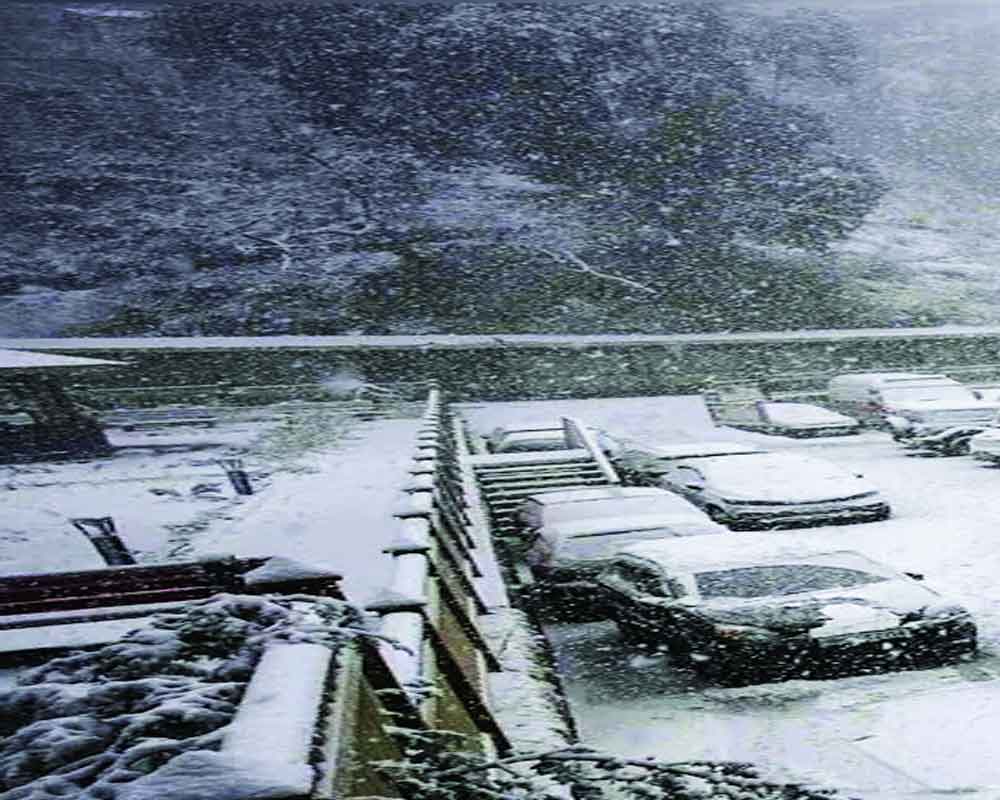With the India Meteorological Department (IMD) predicting light rain on Monday in the national Capital, Delhiites might get respite from the relentless hot weather they experienced in the last two days. Overall, India currently finds itself divided between two relentless and erratic weather patterns, providing no relief to residents.
If Odisha and a few other States are experiencing unabated scorching heat, with temperatures soaring to as high as 42 degree centigrade and prompting the issuance of an orange alert, Himachal Pradesh is grappling with heavy rain and snowfall, resulting in infrastructure damage and road closures. Unfortunately, the situation is not expected to improve in the next few days.
The IMD has issued an orange alert for Odisha and West Bengal for the next two days, signaling a severe heat wave. Additionally, a yellow alert has been issued for Jharkhand, Bihar, Uttar Pradesh, and Tamil Nadu for the next five days due to scorching temperatures prevailing across several states.
These alerts highlight the severity of the weather conditions and emphasize the need for caution and preparedness among residents. In response to the intense heat wave, the Odisha government has declared summer vacation for school students from April 25, following a three-day closure of all schools from April 18 to 20 due to temperatures exceeding 45 degrees Celsius in some areas. On Saturday Odisha reported its first death due to heatstroke in Balasore district while 71 people have been admitted in various hospitals due to heat related illness, as per the reports.
Conversely, for Himachal Pradesh which is grappling with heavy rain and snowfall , the IMD has issued a yellow alert for the next two days, warning of thunderstorms with lightning at isolated places on April 22 and 23.
The Himalayan State Government has reported closure of approximately 104 roads, with Lahaul and Spiti bearing the brunt with 99 closures. The heavy rainfall has also caused a bridge to wash away in Kangra, as reported by the Himachal Pradesh State Disaster Management Authority. The yellow alert signifies severely bad weather lasting for several days and suggests that the weather conditions could worsen, leading to disruptions in daily activities.
The temperature in Delhi is expected to hover around 38 degrees Celcius in the next two-three days. After this, the temperature may increase slowly by 1-2 degrees. “In Delhi, our estimate is that the temperature is expected to remain around 38 degrees Celcius in the coming 2-3 days. After this, it may increase slowly by 1-2 degrees and with it, there is a possibility of light rain on Monday,” Senior scientist of IMD Delhi, Naresh Kumar said.
In addition to immediate weather concerns, the IMD has forecasted an above-normal rainfall season across the country during the southwest monsoon. This forecast, indicating rainfall reaching 106 per cent of the Long Period Average (LPA), comes amid moderate El Nino conditions over the equatorial Pacific region. However, projections suggest that the El Nino condition may weaken to neutral El Nino Southern Oscillation (ENSO) conditions in the early part of the monsoon season.
Additionally, below-normal northern hemisphere snow cover extent during the last three months could influence upcoming weather patterns, including the monsoon season.
In a press statement, the Odisha Government said all schools, including those run by government, government-aided and private, will remain closed from April 25. The government has also announced morning classes from 6.30 am to 10.30 am in schools for three days from April 22 to April 24.
Till 2.30 pm on Sunday, the highest temperature recorded in the state’s Jharsuguda and Keonjhar towns was 43.6 deg C. Six other places have recorded a maximum temperature above 40 deg C.
They were Hirakud (41.8 deg C), Rourkela (41.8), Sambalpur (41.7), Bhubaneswar (41.6), Chandbali (41.6) and Balasore (40.5 deg C), IMD scientist Umashankar Das said.
A study conducted by researchers from the Indian Institute of Technology and the University of Augsburg, which has been published in the Journal of Hydrometeorology, has said that the Indian subcontinent is likely to experience an increasing number of extreme weather events in future.
The fertile and densely populated plain around the Indus and Ganges rivers is therefore likely to become a climate change hotspot, which could have severe consequences for several hundred million people, said the study after investigating what was referred to as compound extreme events.
“The damage caused by the combination of such weather phenomena is usually especially severe,” said Professor Doctor Harald Kunstmann from the Center of Climate Resilience at the University of Augsburg.


























